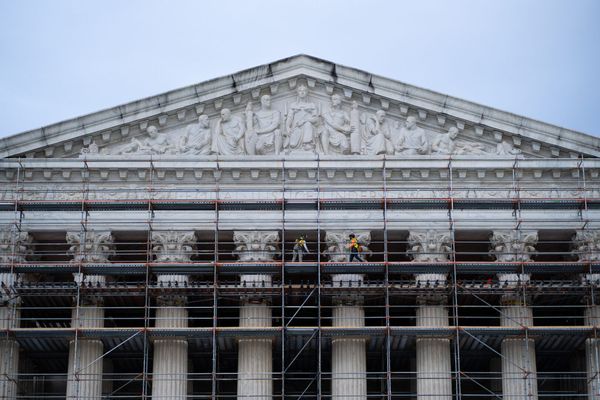
It was a recession in all but name: that is the conclusion of many economists who argue that while the official data shows the UK economy stood still in the last three months of 2022 rather than contracting, it is still in bad shape.
To be precise, the economy actually expanded by 0.01% in the fourth quarter, an increase so statistically insignificant that it is rounded down to zero. Had Britain not added just £77m to its £2.2tn gross domestic product (GDP) then it would have fallen into a technical recession, characterised by two consecutive quarters of negative growth.
Stagnation is not a good look when there is so much that needs to happen – investment in green infrastructure, for instance – to improve living standards and meet net zero targets.
Others argue the data shows Britain turned a corner at the end of last year and there are rosier times ahead as inflation falls and interest rates stop rising.
The economist and founding member of the Bank of England’s monetary policy committee, Dame DeAnne Julius, said that once the strikes were over and inflation was falling, the situation would improve.
“We shouldn’t be too downbeat,” she told BBC Radio 4’s Today programme. “The worry from the Bank of England was that high inflation and higher interest rates would cause quite a long and sustained recession. I don’t think that’s happening. What we see is the private sector growing while the public sector has shrunk a bit because of the strikes.”
Samuel Tombs, the chief UK economist at the consultancy Pantheon Macroeconomics, said his measure of economic activity in fact showed the opposite was the case, with private sector activity contracting in the final quarter.
“In response to the simultaneous tightening of both monetary and fiscal policy, which will squeeze households’ real disposable incomes further, spur businesses to cut employment and investment, and trigger a sharp decline in residential investment, GDP will fall 1% this year,” he predicted.
Business groups mostly sit with the gloomsters, reporting that their members are struggling to make any headway and the government needs to announce tax breaks on investment as part of a broader strategic industrial policy.
Unions respond that most big companies made bumper profits last year on the back of low pay awards for staff. Meanwhile, the return of the London stock market to all-time highs shows that investors expect more of the same this year.
One thing is for sure, whether Britain’s economy begins to marginally improve or slips into a technical recession, the GDP figures in 2023 will show only small differences from month to month and the real story will be one of stagnation.
How the government walks out of this growth desert to greener pastures is difficult to discern.
Yet again the official figures showed that Brexit and the energy crisis were damaging the UK’s ability to generate cash from exports. It must be disheartening for anyone who backed leaving the EU to read that the gap between what the UK exports and imports widened by £2.4bn to £26.8bn, a shortfall “driven by lower exports of both goods and services”, according to the Office for National Statistics.
Excluding movements of gold, the trade deficit was a significant drag – hitting 4.2% of GDP in the fourth quarter.
An economy held back by a lack of exports over the next year is unlikely to be in fine fettle in the run-up to a general election in 2024, spelling a difficult 18 months for Rishi Sunak and Jeremy Hunt.







